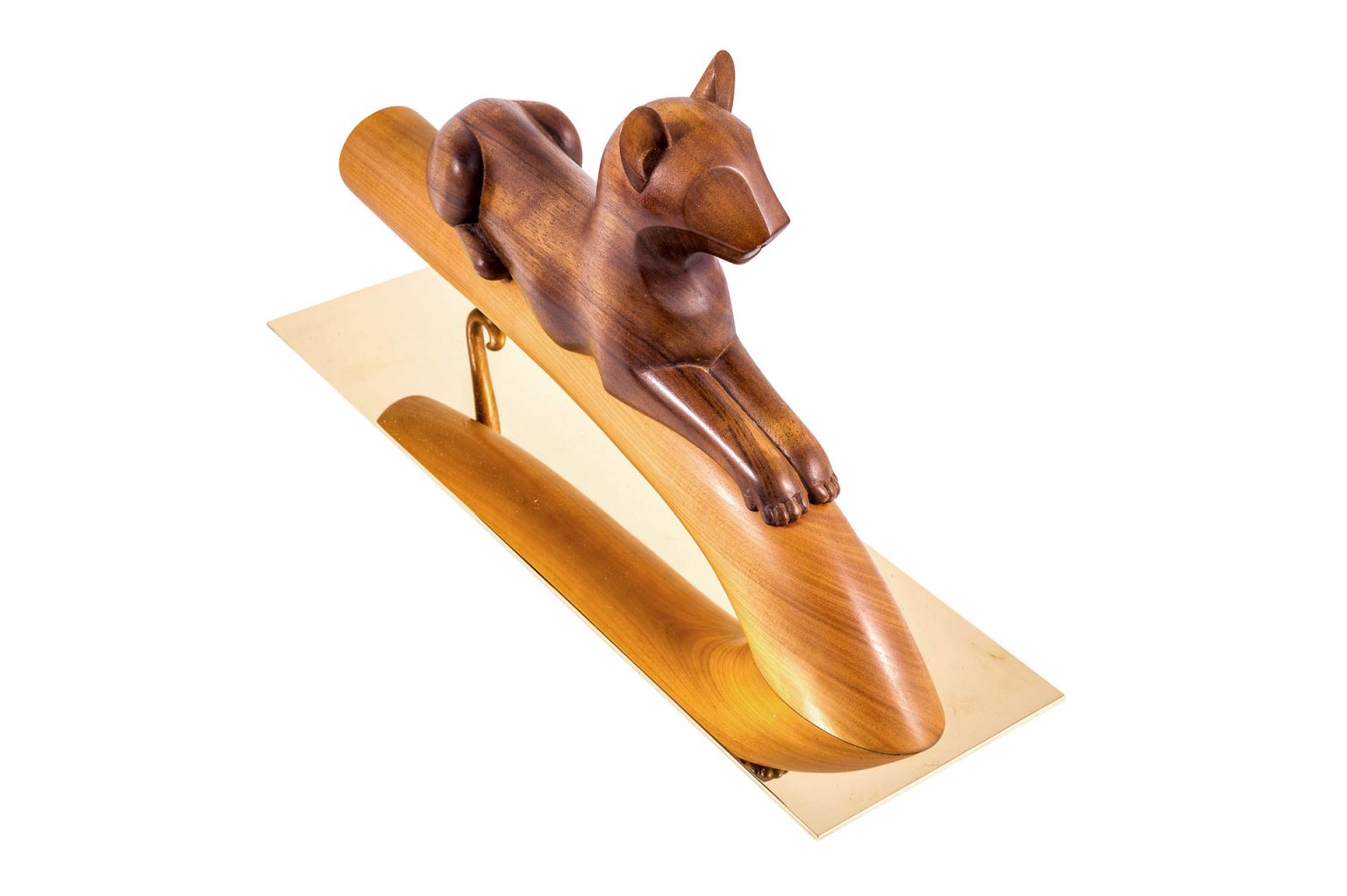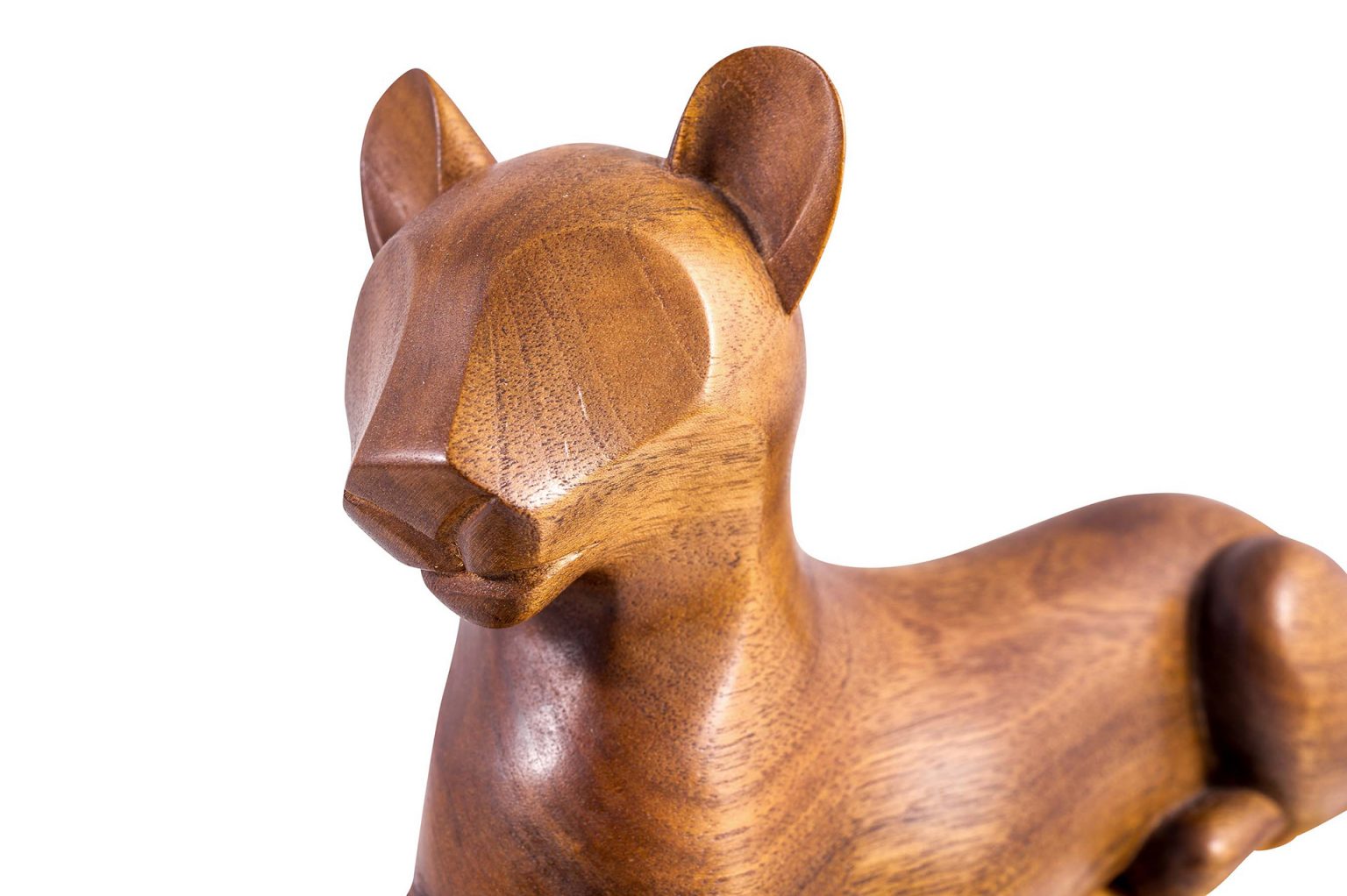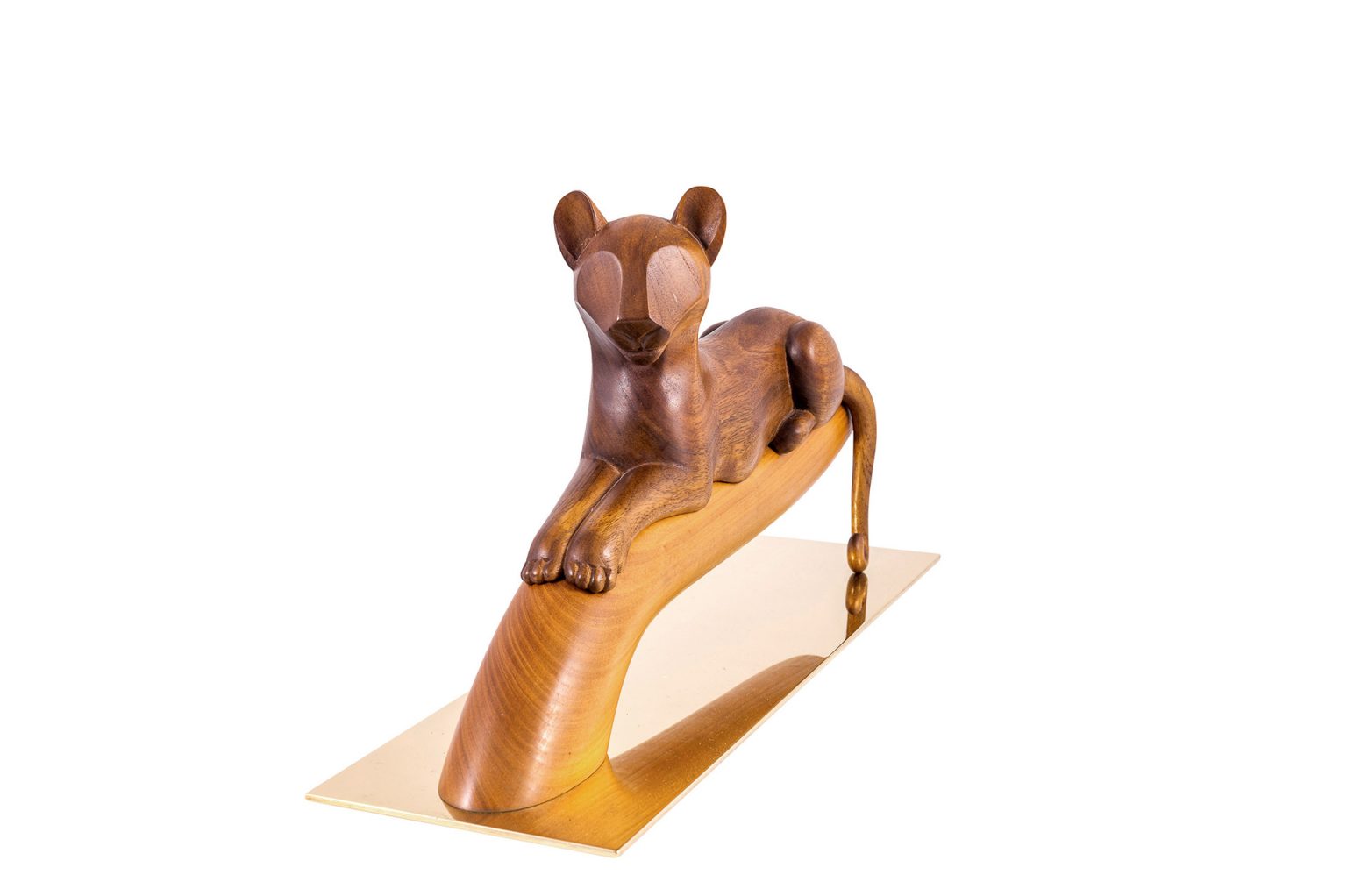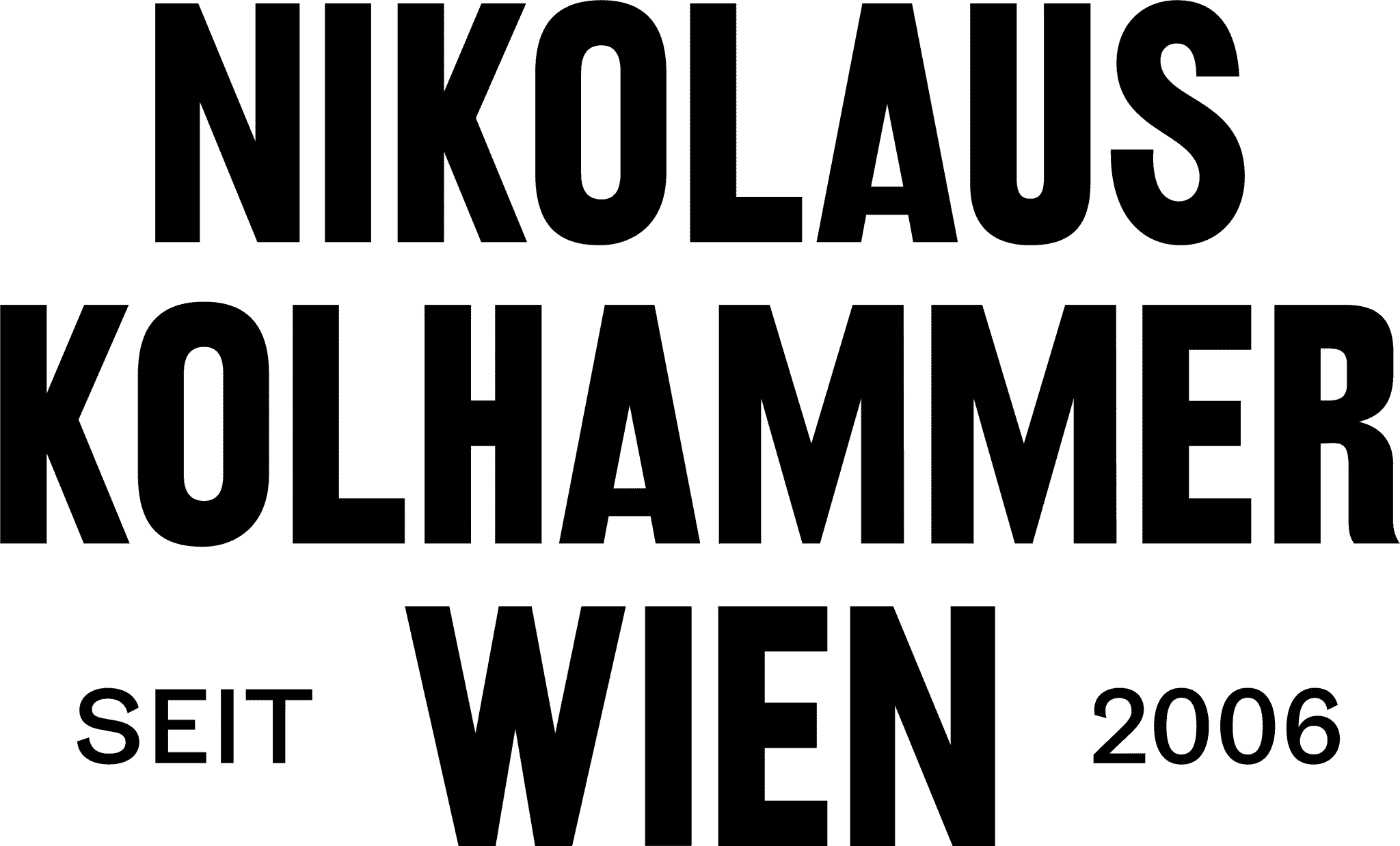Already in the 1930s, wooden art objects were produced at the Werkstatte Hagenauer in Vienna. But it was especially the 50s in which wooden figures became more and more popular.
After the Second World War ended, the situation at the Werkstatte Hagenauer returned to normal. Brass parts and objects were no longer recycled for armor but were once again used to make art objects and household items. Slowly, the economy began to stabilize once more. In addition, Franz Hagenauer returned from the war.
In the post-war period, a lot of wooden furniture was also in demand. Franz managed to convince his brother Karl to open a second branch at Mirabellplatz in Salzburg, and in addition, a wood turnery in Fuschl am See. There, many pieces of wooden furniture were produced, and the well-known animal figures were created from smaller pieces of wood.
In the beginning, they especially produced many cats, dogs, birds, horses, and different forest animals, such as foxes. Walnut and maple were the most used wood species. During the 1950s, exotic motifs became more and more popular in Austria. It was a kind of wanderlust, because times in Europe were still hard. People associated tropical places and their fauna and flora with harmonious emotions. Moreover, people imagined distant parts of the world as natural paradises where there was always summer.
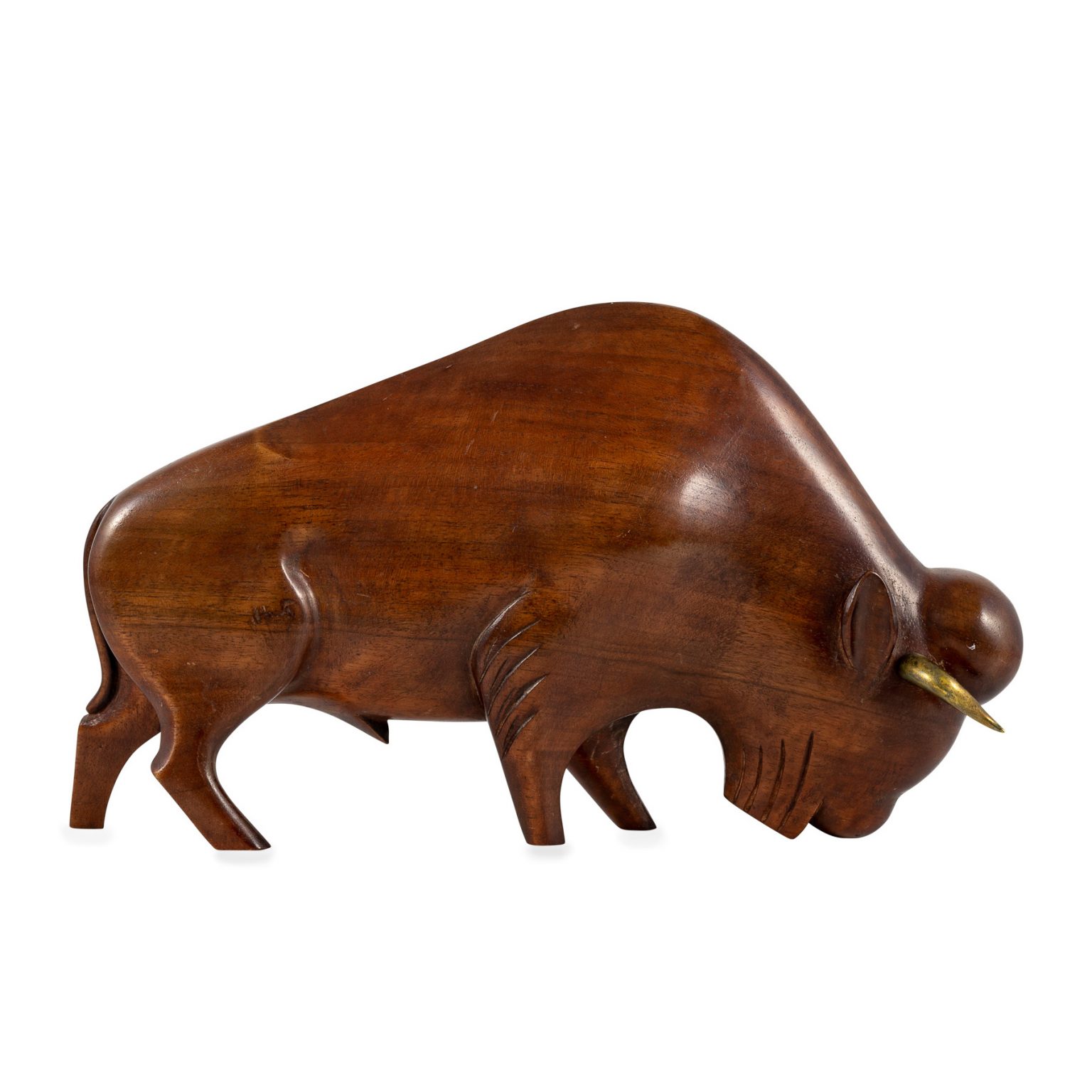
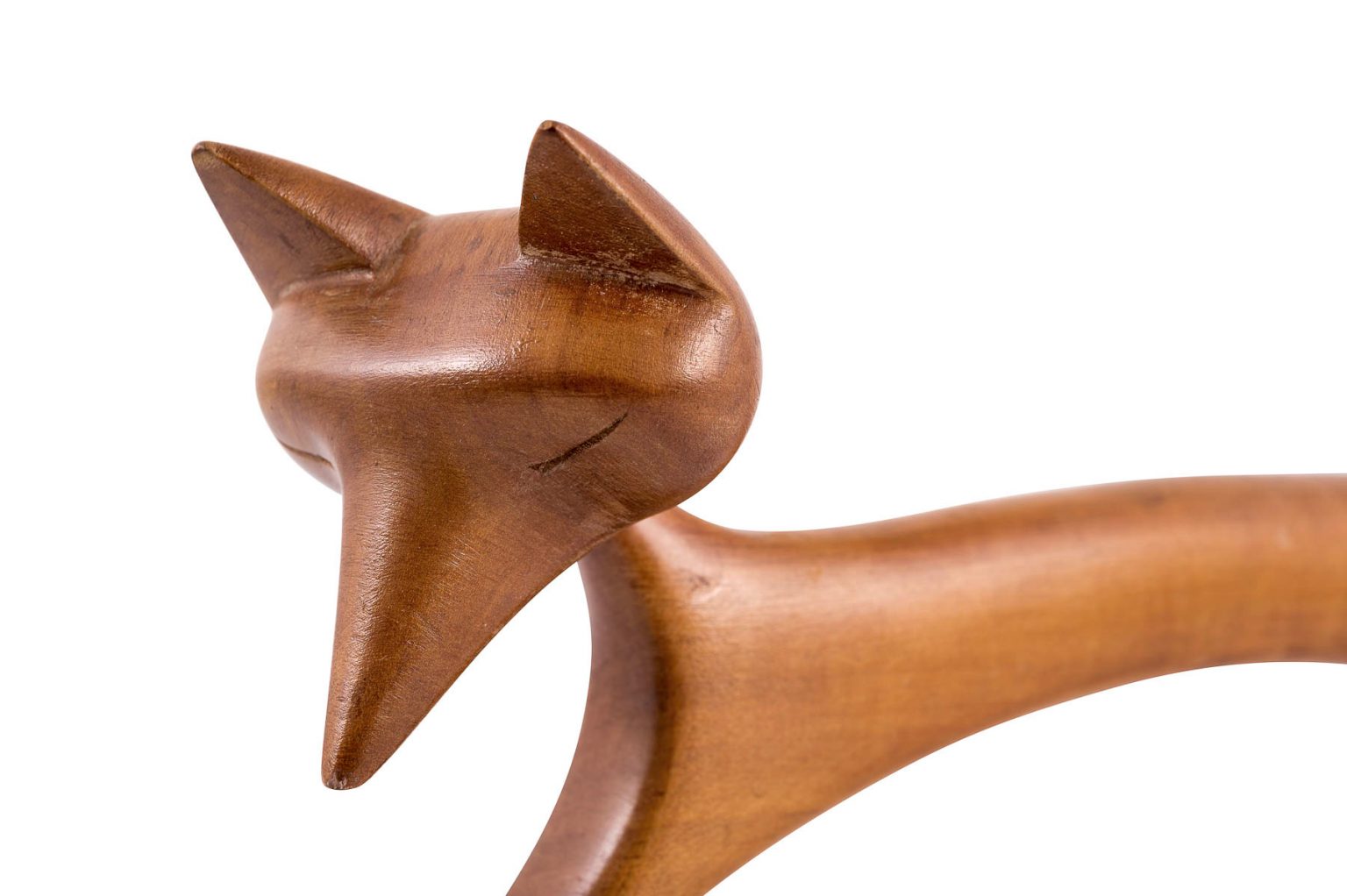
While the workshop also began to make figurines of Africans, Indians, and Asians from a variety of materials, it was also the wooden figurines of exotic animals that were particularly popular with many customers. Polar bears made of white maple, elephants made of walnut, leopards made of precious wood, or springboks and gazelles were just some of the animals from distant lands that the workshop turned and partly carved.
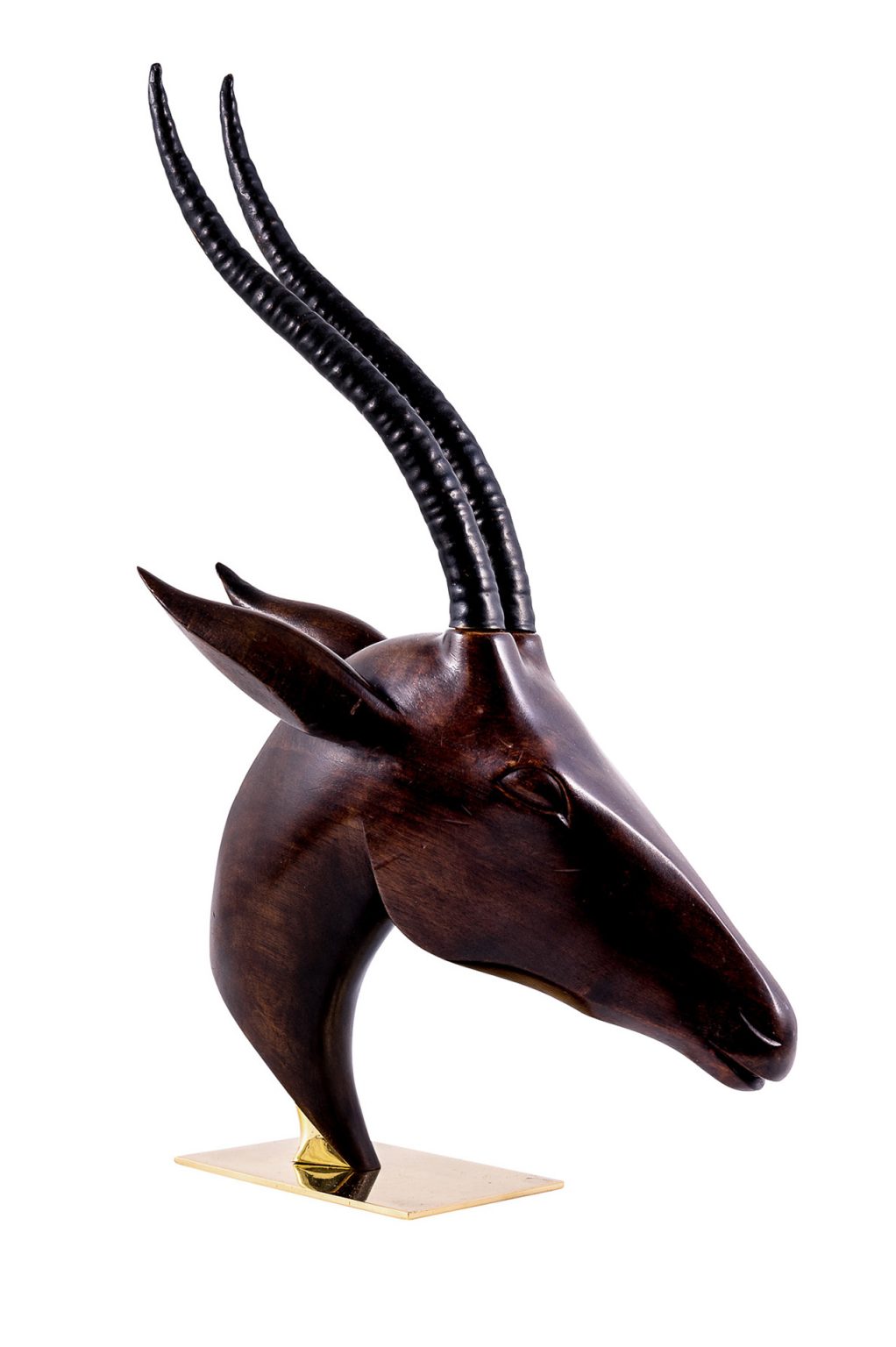
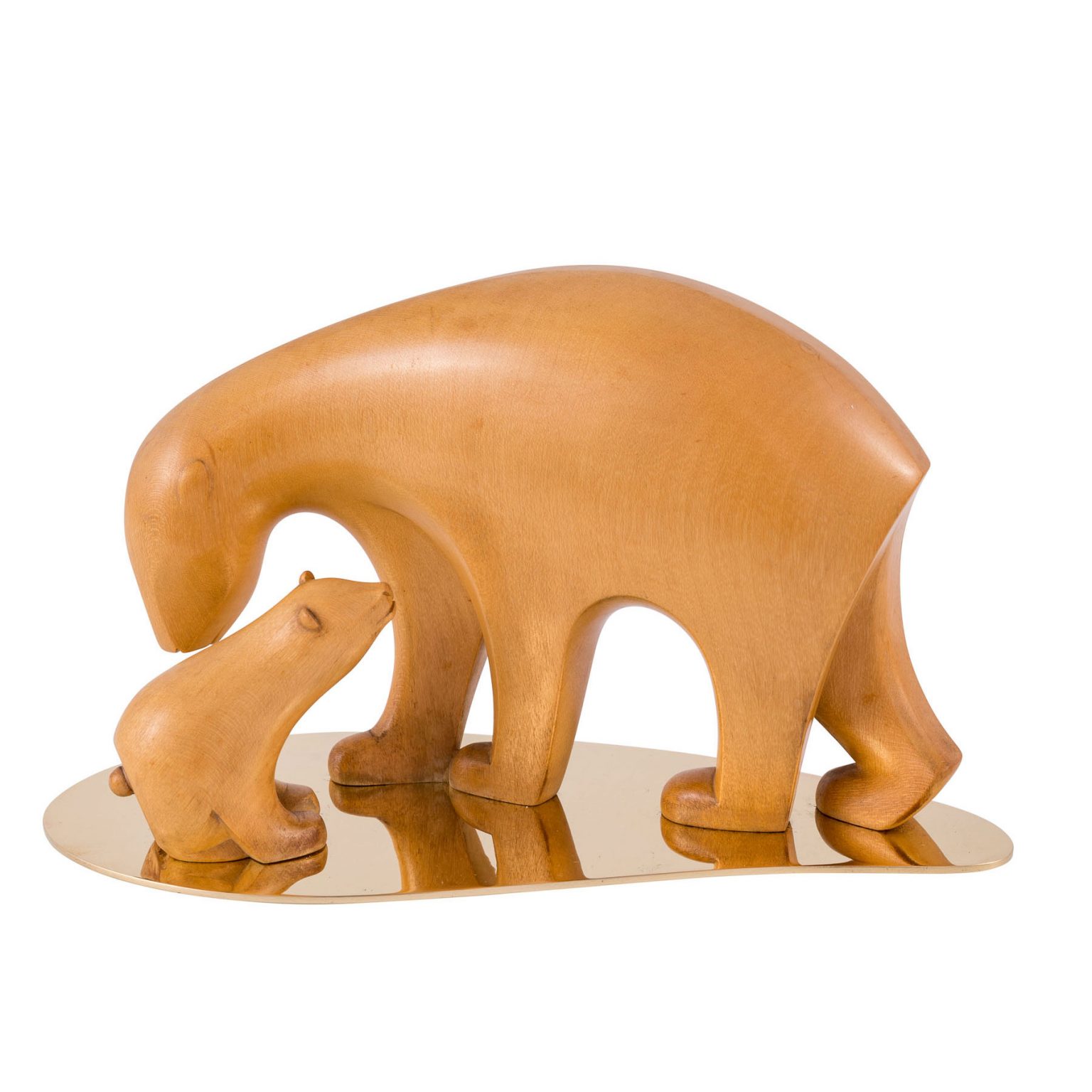
The depiction of most of the animals is highly stylized and reduced. The shapes of the animals are clearly worked out and easy to recognize. Apart from the ears and noses, however, other details are mostly not elaborated. The animal figures reflect a reduction in the formal language, as it is known in the Werkstatte Hagenauer.
One such exception is the panther on the tree, made of walnut around 1950. The size of the wildcat and the tree stump on which it rests also make the animal figure a rarity from the Hagenauer Werkstatte. The depiction is highly stylized as usual, though some details are finely carved. The ears are clearly rounded. The paws, the muzzle, and the mouth are clearly highlighted.

Overall, the combination of the dark animal body and the lighter wood of the branch creates a beautiful contrast. An additional effect is created by the slight reflection of the wildcat and branch in the polished brass at the base. The viewer can directly imagine the predator above the water enjoying the evening sun in the jungle. This extraordinary figure merges an elegant design with a high-quality finish, which awakens wanderlust in any viewer.
